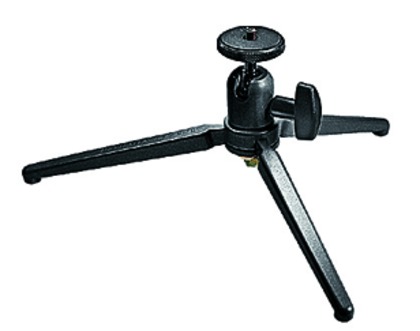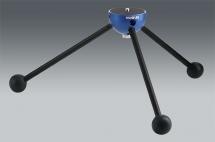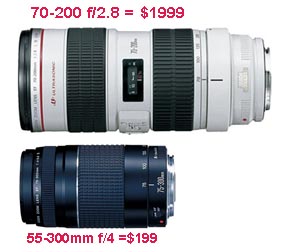For me the reason for buying a small point and shoot camera is because it is small and you can point and shoot it easily. I have come to discover (over the past 20 years) that when someone takes my advice and buys a small easy to use camera, they are eternally happy with it because they tend to take more pictures and they have more fun with their camera. Below are some of the things you should look for when you are buying one of these point and shoot cameras.
Many of the answers to these questions have been answered in my previous Photo Tip posts, so I will point you to them when appropriate.
1. It should be small and compact. There are a variety of cameras on the market that are about the size of an Altoids can these days. I think this is a good measure because much bigger and you are less likely to take it with you everywhere you go, less likely to use it and less likely to be happy with it.
2. It should be easy to use. In order for camera manufacturers to fit their cameras into an Altoids can often times the buttons can get rather small. This IS the compromise you will have to make, but there are definitely some that are smaller than others. Before you make a final decision on a camera, go to the store and actually touch and feel the camera to make sure that A. the buttons are big enough for you, B. that you can read the labels on the camera and C. that it is actually not so small as to be difficult to stabilize.
3. What kind of optics should you go with it? In brief the shorter/wider the lens the better off you will be. Trust me on this. Please read this blog posts. “Understanding Lenses”
4. View finder or no view finder? Most manufacturers are slowly but surely moving towards eliminating the view finder on compact point and shoot cameras in favor of the live view on the LCD screen. When I am shooting with my DSLR there are only select times when I will use the live view on the LCD screen to create an image. Why? because my camera is big and it’s difficult to stabilize the camera for the shot I want. I also like the tunnel vision I get when I’m looking through the viewfinder as well (this also helps me compose my image). On the other hand the viewfinders offered on a compact point and shoot is so small that they too are difficult to use. When I’m shooting with a small camera, I usually favor the LCD screen. I think the days of the view finder on these little cameras are numbered. The drawback of an LCD screen is that manufacturers have not been able to overcome the glare issue when it is used outside in bright daylight (but they have gotten better), so without a viewfinder you may find it difficult to see what you are doing under these conditions. Also, by having a viewfinder you can turn off the LCD screen saving your battery power and be more discrete about what you are shooting.
5. How big is the LCD screen? Obviously the size of the LCD screen is limited by the overall size of the camera. But I believe bigger is better. It is also useful to have the option to change the brightness of the screen as well as turning it off (even if you do not have a view finder). What about the new technology of touch screens? welllll, honestly I’m not enamored with the idea. I think it’s just a bit too slow to get to the menu items I really want to get to. Let’s face it, you are going to get your camera, set it up and once very blue moon you will need to change that setting; and when you want/need to do that you want to change it fast! IMHO, touch screens make you scroll and scroll and scroll to make simple changes. I’m just not a fan. You will have to use your own judgment on this.
Other features worthy of mention:
6. Weather/Waterproof: I love the idea of a waterproof camera! Who wouldn’t? But not all are created equal, many have high leakage rates. One way to figure out what the failure rate of any piece of electronics is to read the reviews of other buyers. For instance, last year I really wanted to buy a waterproof camcorder, but nearly 23% of all on-line reviewers seemed to report problems and leakage with that particular camera. (the manufacturer has since pulled the plug on this product). I believe the easiest way to tell the failure rate of a product s by simply looking at the percentage of reviewers rating a product with 2 stars or less. The success rate of a product is in the percentage of 4 & 5 stars. After many years of buying too much electronic equipment, I feel that an acceptable failure rate of a piece of equipment is less than 10%, rarely do I see less than 5%. Speaking of on-line reviews, the same product above, got about 4-5 star rating from “professional” reviewers. But to test the camera those guys put it in a bucket of water for a few minute and then gave it a thumbs up. Reviews from actual customers usually mean that the person jumped into a swimming pool for a while. Lastly, I know there are always those who are unhappy with everything, but I also look at bad reviews looking for this: What is the customer service attitude of the manufacturer? With the product above? Customers reported incredibly bad responses from the manufacturer over and over again. With over a 20% failure rate, very poor customer service, I decided against buying the camera.
7. Video: I love this this feature on a point and shoot. Get HD if you can. I think you’ll enjoy using it. It’s just fun to shoot a video sometimes. But you will need more memory to do this. Read this blog: “I like Chips”
8. Image Stabilization & Face Detection: also known as IS. Many manufacturers are starting to make this a standard feature on their cameras. I think it’s worth the money. What is it? Image Stabilization is just that, it helps to stabilize your image. Whenever you are shooting in low light and you have a slow shutter speed with no flash you are more likely to move your camera around, IS will help counter this. As a matter of fact it helps counter all hand shake. Be careful though, it should be turned off when you are using a tripod. There is also a technology called Face Detection. Since most amateur photographers like to photograph people, they also want the people are in focus too! duh. Manufacturers have come up with a nifty system that automatically detects faces in your photo and attempts to focus on that! How cool is that? I like it, I think the technology works well.
9. File format : although most point and shoots produce jpg files, some are starting to produce RAW. Please read: “File Format”
10. Shutter Lag: Although this is a very difficult thing to determine, and manufacturers have clearly not agreed on a standard test so as to possibly publish a number we can all understand… it IS something you need to pay attention to. Please read: “Shutter Lag”
Well, that’s the skinny, or not so skinny on how to buy a compact digital camera. I hope this posting helps as we enter the Christmas season. If you have any questions please feel free to write to me. If you want to learn how to use that camera check out this site: http://newyorkcityphotosafari.com/


